|
|
|
|
Products mentioned in this Article
--None--
|
|
|
|
|
|
|
|
|
 |
|
|
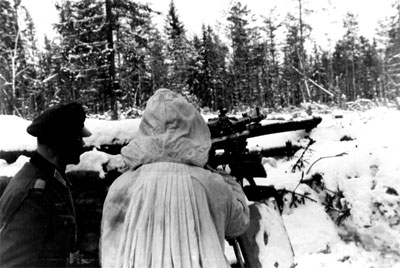 |
V. The Juggernaut Strikes – A Day-by-Day Account
By Wolf Höpper
The Taking of the Bridge at Kalach
Return to 23 November...
The vital Don bridge at Kalach was the main object of the whole operation Uranus. The German 6th Army had no real combat troops stationed there. Only an amalgam of units:
|
|
A transport company of the 16. Panzerdivision
Workshops and maintenance facilities of the 16. Panzerdivision
A small contingent of military police
A heavy Flak battery of the Luftwaffe
The securing of the bridge itself was given to one 8.8 cm Flak and 25 men of a construction battalion from Organisation Todt. From surplus personnel a weak infantry battalion was organized and equipped with infantry weapons.
During the night of 21/22 November the most vital order of the operation was issued by General Major Rodin, commander of the Soviet 26th Tank Corps. He gave Lieutenant Colonel G N Filippov, commander of 19th Tank Brigade, the order to advance and take the bridge at Kalach.
At 0615 hours, Filippov ordered his assault force to advance over the seemingly endless steppe. At the front of his column were three captured German vehicles, 2 panzers and 1 armoured car. He intended to trick the German bridge security forces and seize the bridge before the detonation charges were triggered.
|
|
Shortly after the columns started to move, Filippov, with the crew of the first vehicle, discovered an old Russian man accompanied by two German soldiers. His men shoot the Germans on the spot, and Filippov asks “Uncle Vanya” which way to the bridge. After the old man hears his mother language, he calms down and proposes to lead the soldiers to the bridge. He climbs aboard a T-34 and the column marches on.
The Germans had established a pioneer training school at Kalach. The commander of this school was Oberst Josef Linden, who was commanding the surviving assault pioneers at Stalingrad. The Luftwaffe had built a small training facility on the eastern bank of the Don River.
The pioneer school was located on a hill east of the city limits. It was a normal working day despite the fact for the last 36 hours masses of troops, rear area services and supply columns were flooding north-eastwards through town. The acting commander of the school, Colonel Mikosh, was not worried since no orders for retreat were issued to him. So the usual training in close combat, explosives use, and weapon knowledge continued. Not only German, but also Romanian soldiers and non-commissioned officers were trained here. The latter trained in the use of German magnetic mines.
|
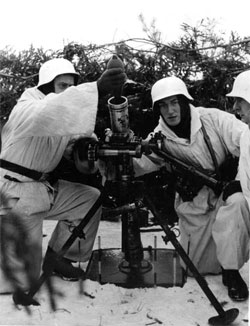 |
|
Also a nearby panzer repair workshop of the 16.
Panzerdivision used the bridge several times per day to visit a firing
range to adjust the guns of newly repaired tanks.
The German instructors also used several captured T-34s and older model tanks for instruction on the use of close combat anti-tank weapons. These tanks moved every morning over the bridge to the training grounds on the steep western riverbanks. All of these indicate it wasn’t unusual to see many types of vehicles, including Soviet made vehicles, crossing this bridge.
All lights were turned off to maintain blackout conditions in the Soviet column. A further 16 T-34 tanks with tank riding infantry accompanied the small battle command. Before the tanks entered Kalach, the T-34s were separated and moved to an area where dense brush and small trees provided cover for them. It was at the same point where on the 2 August German panzer crews spotted Stalingrad for the first time.
Filippov’s small “German” battlegroup passed the
first German security posts at the outskirts of the town and advanced
deeper into it.
|
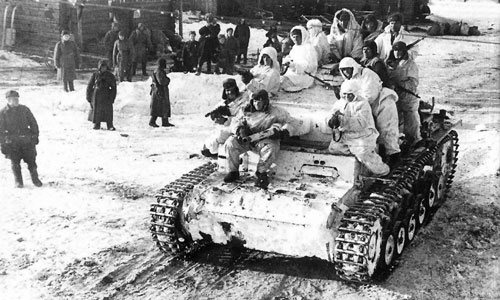 |
Hundreds of German soldiers applauded and saluted them, when they passed them by. Filippov discovered the Germans were using the captured T-34s for training. Once this became known he decides to pull his own tanks forward and cross the bridge with them.
When Feldwebel Wiemann, security guard and
gunner of the 8.8 cm Flak, sees the enemy tanks advancing towards the
bridge, he is not alarmed, since everything seems normal.
|
| On his first
day, he was alarmed, but some military police soldiers explained the
facts about the Soviet tanks, and so he was not worried, when the
“normal” return of the tanks took place. Suddenly machine-guns from
the tanks start firing on the security guards, now he is fully alert!
Russians! He immediately strikes the alarm, a piece of steel hanging
from a rail. His men, until then sleeping in a hut next to the heavy
Flak gun, storm out of their quarters and start to man the gun. Only 8
anti-tank rounds are available, nonetheless Wiemann gives the order to
fire. The first T-34 blazes like a torch. The second shot lifts another
up and the tank flies into the Don. |
The mighty 88 fires two more times but then only the sound of the burning wood from the nearby hut can be heard.
Although several of his T-34 tanks were destroyed, Filippov’s battlegroup was able to cross and seize the bridge. After successfully seizing his objective, he established an all around defensive perimeter and contacted the 26th Tank Corps to announce his success and demanded reinforcements to hold the vital objective.
|
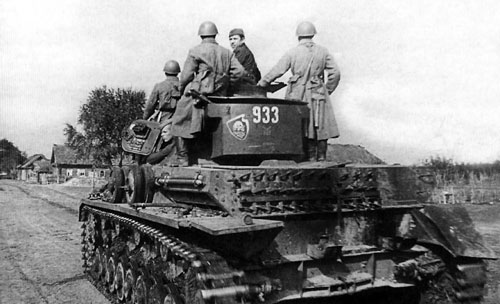 |
|
Three times the Germans tried to retake or
detonate the bridge, but every attempt was repulsed. After the first
detonation attempt was defeated by Filippov’s group, motorised infantry
arrived and reinforced the small Soviet battlegroup. The German attacks
were supported by artillery and mortars, which fired from the heights
across the Don River.
After the motorised infantry reinforcements arrived, Filippov ordered an attack to take the town of Kalach. During the morning hours the Soviets advanced to the town centre through the chaos of cramped and crowded streets. Around midday, the 3rd battery of the nearby Flak training school, supported by infantry, several 7.5cm anti-tank guns, one 8.8cm Flak gun and two mortars tried to push back the Soviet bridgehead, but were bloodily repulsed. The Soviet defenders knew that holding here at all costs would guarantee the success of the whole operation.
|
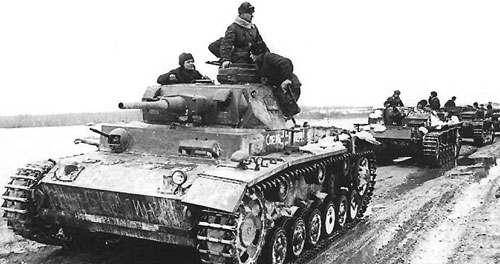 |
After darkness set in a new attack to clear the town of German resistance was mounted by the Soviets. A German 15cm howitzer battery, which supported the previous attacks, was withdrawn to Stalingrad, thus allowing the Soviets to completely take the town by 1600 hours. The surviving defenders retreat further to the eastern edge of the town.
The situation became precarious for the few German defenders.
|
| Their
heavy weapons lacked ammunition or were knocked out, so the survivors
blew up their workshops and all non-transportable supplies and
retreated. Many of these soldiers took the way south and hereby
survived the catastrophe that was sealed that day. Others drove towards
Stalingrad to meet their comrades and share their common uncertain
future. |
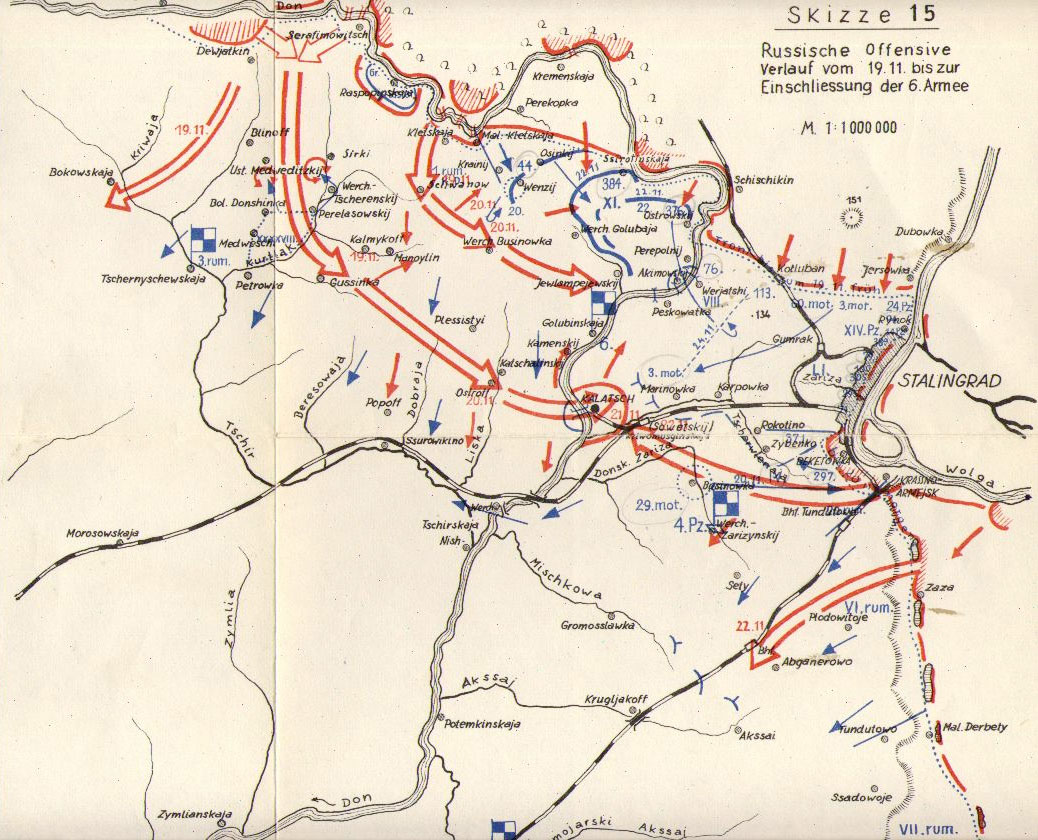 |
VI. Conclusions
The Soviet planning called for a mere three days to break through the enemy line of defence. The actual events did not run so smoothly. In the case of the 5th Tank Army, for example, this goal was accomplished in five days. This delay resulted for several reasons:
With some exceptions, the 47th Guards Rifle Division, 159th Rifle Division, and the 8th Cavalry Corps were not able to reach their mission goal of reaching the Chir River. The mobile-mechanised units had to fight hastily gathered reserve forces along with the remaining units of the initial defence. The rifle divisions were held up by the stubborn often underestimated Romanian forces. Therefore the myth, that these soldiers fled as soon as the first shot was fired has to be at least partially readdressed.
|
|
What general conclusions can be drawn from the information above?
The German General Staff, Army Group B, and 6th Army were all well aware, that the Soviets were planning to counterattack in the Stalingrad sector. Starting around 11 November they even had a very clear picture of the composition of the Soviet assault forces, although some parts might not have been revealed to them at this point. Any statement that the offensive took the responsible commanders totally unaware is historically inaccurate and cannot be taken as well researched, but is only a subjective evaluation by the people making these statements.
Although all responsible German officers were aware of the upcoming Soviet offensive, their counter measures remained insufficient, because the following points hindered them from acting appropriately:
|
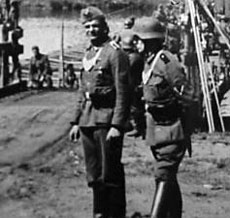 |
a.) The 6th Army and 4th Panzer Army didn’t have significant reserve units because most of the first rate formations were stuck in the fight for the city of Stalingrad. The only exception is the 29. Infanteriedivision (motorised) under 4th Panzer Army.
b.) The units that were withdrawn from the city to counter the offensive were simply insufficient. This is especially true of the three German panzer divisions committed to Stalingrad. They should never have entered the city to fight. If they had remained in reserve or at least out of the city, the Soviets would have faced far greater opposition than the battle worn and decimated combat groups that these divisions actually formed during the initial encirclement battle. Even after parts of these divisions were withdrawn the panzergrenadier regiments still remained in the city. A good example is 14. Panzerdivision in which their withdrawal was ordered too late to be any help.
c.) Hitler demanded too much of 6th Army at that point. He believed they should counter the Soviet offensive and still seize Stalingrad simultaneously! With the already burnt out and severely reduced units at their disposal, this order was simply not realistic.
d.) The 22. Panzerdivision was considerably weakened through previous detachments of various units and the incomplete upgrade to more modern German tanks. This division was basically not fit to fulfil the upcoming assignment. It is not recorded whether Hitler, or the general staff, knew these facts when they were deciding how to utilize this division.
e.) General Heim’s deployment of his forces to meet the Soviet breakthrough units. Together with the Romanian infantry, he had a good chance to repulse or at least slow down their advance from these positions and his counter thrust was intended to keep the Soviets off balance. Therefore the 6th Army might have had more time to withdraw units from Stalingrad and organize a more effective defence than they actually did. The order to change his route of attack not only took that chance away, but also cost his units losses, which hindered him in later actions. Although full success seems unlikely, taking only numbers and equipment aspects into consideration, the 6th Army still had a good chance to prevent disaster, even if it was only temporarily.
|
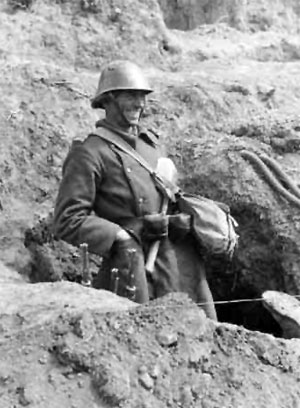 |
The myth of the unreliable, wildly routing Romanian forces, maintained by many authors, cannot be applied to all of the Romanian units:
a.) Many authors don’t take into account, that when German forces encountered fleeing Romanians, they were seeing, many times, rear area units or parts of totally shattered front line units. The same held true for many German units, especially supply and rear area services, like the field post, bridging columns, maintenance units and other non-combat formations. The illustration of many of these German instances was not shown in this article, since the focal point was on the military aspects of the operation.
b.) On many occasions the Romanian units held their ground and defended the best they could. This is especially true during the initial Soviet attacks on the Romanian V Corps. Their demonstrated combat abilities were a lot higher than many ‘experts’ in the German staff expected them to be. Hoth (4th Panzer Army commander) mentions that the Romanian infantry divisions were overcome by ‘Panzerschreck’ (tank fear) and fled. This is the source of many of the myths surrounding the Romanian forces. There is no reason to suspect it didn’t happen in the Romanian 3rd Army also, but Hoth is the only one who mentions it. For the most part, the Romanian units were answering the Soviet attacks with great determination as detailed earlier.
|
Like the Soviets admit in their operational study, the plan took longer to execute than anticipated. There were several reasons for this delay:
a.) The supposedly weak Romanians gave a far stiffer fight than originally assumed by the planners.
b.) The initial artillery barrage, in the northern sector, simply didn’t dislodge the enemy defence leaving most units able to defend their positions effectively.
c.) Their own units were not up to the planned training standard. Many formations were either newly raised or had to be rebuilt after serious losses preceding the offensive. Many soldiers simply lacked experience. Many commanding officers, take Batov as an example, were not very confident that the attack would succeed. This leads to greatly hindered execution of the plan, since even minor setbacks were thought to be far more serious than they actually were.
d.) As an example of the successful counterattack by the German 29. Infanteriedivision (motorised) showed, the Soviets were still at a tremendous disadvantage concerning their tactical command abilities. When the Soviets faced regular German combat formations, even at company or battalion level, the Soviet soldier still showed certain deficiencies in his abilities. The German panzer command capabilities were still far superior. Later Operation Wintergewitter, to free the encircled 6th Army, would demonstrate this.
|
The most overlooked fact for the success of Operation Uranus was an event taking place far further west than most people would consider related. The Allied landing in Northern Africa put a strain on the German command and staff system. Hitler was so entangled with paranoia of further Allied landings, especially in southern France, that it prohibited him from examining the available facts thoroughly.
|
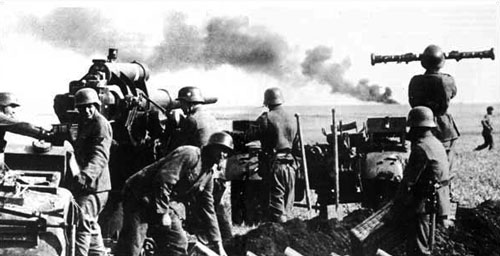 |
The first active ground engagement of American forces in the European war gave the Soviets an advantage. The best German divisions at that time were kept
in reserve just in case they were needed in Western Europe. The three
SS Panzergrenadier Divisions, that would only three months later thwart
the Soviet advance towards Rostov, were not available to the German
command on the East Front. If these divisions would have been available
for the beginning of Operation Uranus or later in the relief attempt,
then history might have been changed.
Wolf Höpper |
VII. State of the historical research at the time of writing
Although every book about the battle for Stalingrad portrays the events of this article more or less, none can be recommended solely as the ultimate reference source for the Operation Uranus portion described above. Every author places emphasis upon certain aspects causing us to have to consider many sources.
Soviet planning and operations description:
These two books are highly recommended:
Louis Rotundo’s edited version of the official 1943 Soviet General Staff Study. Although it includes a lot of propaganda, especially in term of writing style, the data concerning the actual flow of operations formed the basis of this article. The number of inflicted casualties and captured equipment, etc. can mostly be neglected, since this official study was, like Rotundo outlines in his preface, intended to be an instruction tool for training officers. Aside from the memoirs of involved officers, not too much original Soviet material is available for this time frame.
Earl F. Ziemke´s classic “From Moscow to Stalingrad” gives a good insight into the Soviet side at the high command level.
German side:
The same for Ziemke’s book can be said for Kehrig’s book detailing the German side. The German – Romanian relationship and its changing states of agreement is profoundly researched and documented. This book is an invaluable source about the battle as a whole. The only drawback being that not every operation/engagement is described in detail. Otherwise the book is full of hard facts based on actual original documents.
The German divisional histories of the panzer units can be neglected here. Basically all available data for the battle is included in this article. The divisional histories of the infantry units were also neglected, because the main focus prevented a more detailed representation of the events from their side.
Romanian involvement:
The problem here is the author doesn’t speak or read Romanian. Although a bibliography (“Rumänische Militärische Bibliograhie” (Auswahl 1944 – 1984) Militärverlag Bukarest, 1985) was tracked down early in the research process, the book didn’t handle the subject of Romania during WW II except the uprising on 23 August 1944 and the involvement of the Romanian army against the Germans until the end of the war.
If Romanian historians have more data, or if there are more recent books describing the involvement of the Romanian Army during Operation Uranus, please let us know. It might be possible since the Romanian archives were opened. Unfortunately such data was not available to the author. Every described event including any Romanian participation was therefore taken from German and English sources.
(Editors Note: I can recommend Mark Axworthy’s Third Axis, Forth Ally as a good account of the Romanian involvement in WWII. Also Reluctant Axis: The Romanian Army In Russia 1941-44 by Mihai Tone Filipescu covers the Romanian participation on the Eastern Front. Both are in English.)
|
VIII.Bibliography
(Most of these are only available in German)
Beevor, Antony "Stalingrad"
complete paperback edition
Goldmann Verlag,
München, Germany
March 2001
ISBN 3-442-15101-5
Boog, Horst "Der Globale Krieg, Die Ausweitung zum Weltkrieg und der Wechsel der
(and others) Initiative"
Volume 6
Deutsche Verlags-Anstalt
Stuttgart, Germany
1990
ISBN 3-421-06233-1
Carell, Paul “Unternehmen Barbarossa“
Verlag Ullstein GmbH
Frankfurt – Berlin - Wien
1963
Craig, William "Die Schlacht um Stalingrad"
licensed edition
Verlag Kurt Desch GmbH
München, Germany
1974
ISBN 3-420-04692-8
Grams, Rolf "Die 14. Panzerdivision 1940 – 1945"
License edition of Edition Dörfler
NEBEL VERLAG GmbH,
Eggolsheim, Germany
no date
Kehrig, Manfred "Stalingrad Analyse - Dokumentation"
Deutsche Verlags-Anstalt
Stuttgart, Germany
Piekalkiewicz, Janusz "Stalingrad – Anatomie einer Schlacht"
Licensed edition of Südwest Verlag, München
Bertelsmann Club GmbH
Gütersloh, Germany
No date
Rotundo, Louis "Battle for Stalingrad - The 1943 Soviet General Staff Study"
Pergamon-Brassey´s International Defense Publishers, Inc.,
Washington et.al., USA
First edition 1989
ISBN 0-08-035974-4
Schröter, Heinz "Stalingrad – bis zur letzten Patrone"
Licensed edition
Cinema-Velag Albert Annies
Waiblingen, Germany
1961
Senger u. Etterlin jr. "Die 24. Panzerdivision 1939 – 195"
Dr. F.M. Licensed edition of edition DÖRFLER
NEBEL VERLAG GmbH
no date
Stoves, Rolf "Die gepanzerten und motorisierten deutschen Großverbände"
Podzun-Pallas Verlag
Kohlhäuser Str. 8
61200 Wölfersheim-Berstadt, Germany
second printing 1994
ISBN 3-7909-0279-9
Werthen, Wolfgang "Geschichte der 16. Panzerdivision1939 – 1945"
Verlag Hans Henning Podzun
Bad Nauheim, Germany
1958
Ziemke, Earl F. et.al. "Moscow to Stalingrad: Decision in The East"
Center of Military History
United States Army
Washington D.C., USA
1987 |
Last Updated On Thursday, November 19, 2009 by Wayne at Battlefront
|
|
|